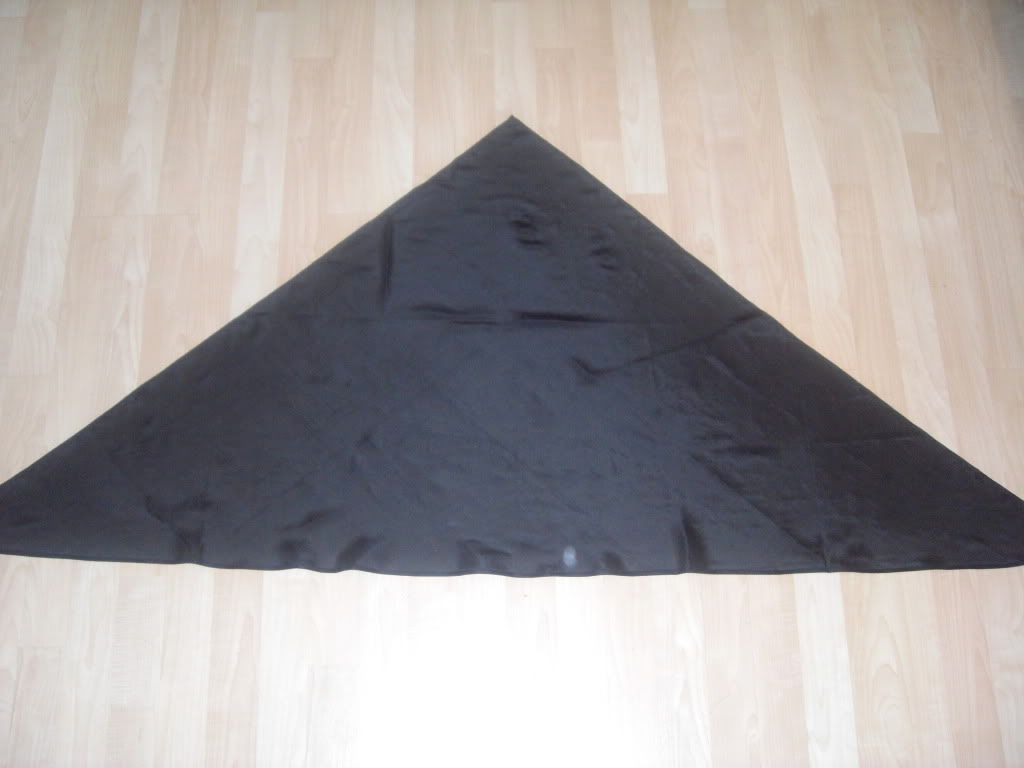Re: Cravats Worn by the Working Class.
The catalog of the Great Exhibition of 1851 mentions checked cotton cravats manufactured in Glasgow (p. 75); Richard Cobden, the Apostle of Free Trade (1865), mentions a man in a light cotton cravat -- there are many hits for such on Google Books, including an article in Punch in 1845 that mentions "a man in a light cotton cravat and no shirt-collar, who looks very like a butler out of place." I see references to a figured cotton cravat, a yellow cotton cravat, and green cotton cravat, etc.
Silk cravats may have been all the rage, but there were cotton ones, and even linen, as in this description of a preacher from Wars of the Western Border (1856):
"Their minister was certainly a study, he had just such a face and air as a clever artist might have chosen to characterize the bell-wether of some hill-hiding Covenanter flock la short, it was stern, hard, and uncompromising. Nor was his garb less singular, for he sported (may we be forgiven for the phrase), a snuffy-brown coat, of strange and antiquated cut, which bore but too evident tokens of long and not over careful usage. The continuations were of yellowish-grey cloth, with stove-pipe legs, built like an Irishman's hurricane, 'straight up and down,' and encased below the knees in serviceable-looking buckskin riding-leathers, well stained with Missouri mud; add to these a pair of buffalo overshoes, a surprising shirt collar, and a wonderfully starched linen cravat, whose complicated folds and puritanical stiffness would have broken a 'New York washerwoman's heart at first sight,' and you will have a very accurate delineation of this reverend gentleman's outer man. We must not forget, however, a pair of wide-bowed horn spectacles which divided their time between the top of his venerable head, and the bridge of an independently cocked-up nose, thereby adding not a little to the grotesqueness of this somewhat unclerical tout ensemble."
But you know me. I wear my cotton cravat with a pair of blue spectacles. :)
Originally posted by PogueMahone
View Post
Silk cravats may have been all the rage, but there were cotton ones, and even linen, as in this description of a preacher from Wars of the Western Border (1856):
"Their minister was certainly a study, he had just such a face and air as a clever artist might have chosen to characterize the bell-wether of some hill-hiding Covenanter flock la short, it was stern, hard, and uncompromising. Nor was his garb less singular, for he sported (may we be forgiven for the phrase), a snuffy-brown coat, of strange and antiquated cut, which bore but too evident tokens of long and not over careful usage. The continuations were of yellowish-grey cloth, with stove-pipe legs, built like an Irishman's hurricane, 'straight up and down,' and encased below the knees in serviceable-looking buckskin riding-leathers, well stained with Missouri mud; add to these a pair of buffalo overshoes, a surprising shirt collar, and a wonderfully starched linen cravat, whose complicated folds and puritanical stiffness would have broken a 'New York washerwoman's heart at first sight,' and you will have a very accurate delineation of this reverend gentleman's outer man. We must not forget, however, a pair of wide-bowed horn spectacles which divided their time between the top of his venerable head, and the bridge of an independently cocked-up nose, thereby adding not a little to the grotesqueness of this somewhat unclerical tout ensemble."
But you know me. I wear my cotton cravat with a pair of blue spectacles. :)













Comment